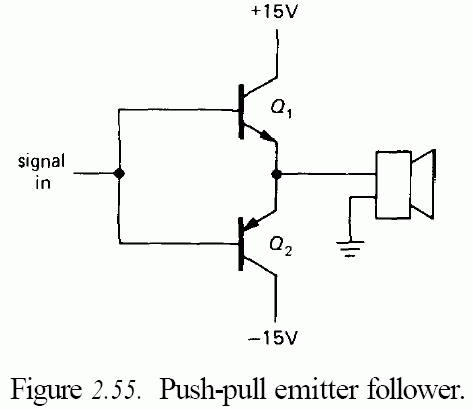Follow along with the video below to see how to install our site as a web app on your home screen.
Note: This feature may not be available in some browsers.

Yes, the figure 2.55 circuit is used to demonstrate the problem, figure 2.57 is solving it.Your transistors need some BIAS. That is a small voltage (~ .8V) to turn on (open up) the base emitter junction. The top transistor needs its base at 1/2 Vcc(V2) + .8V, the lower needs 1/2 Vcc(V1) -.8V.
R2 in your circuit is usually the collector of an NPN transistor so it can swing the base of the PNP output transistor completely to ground.